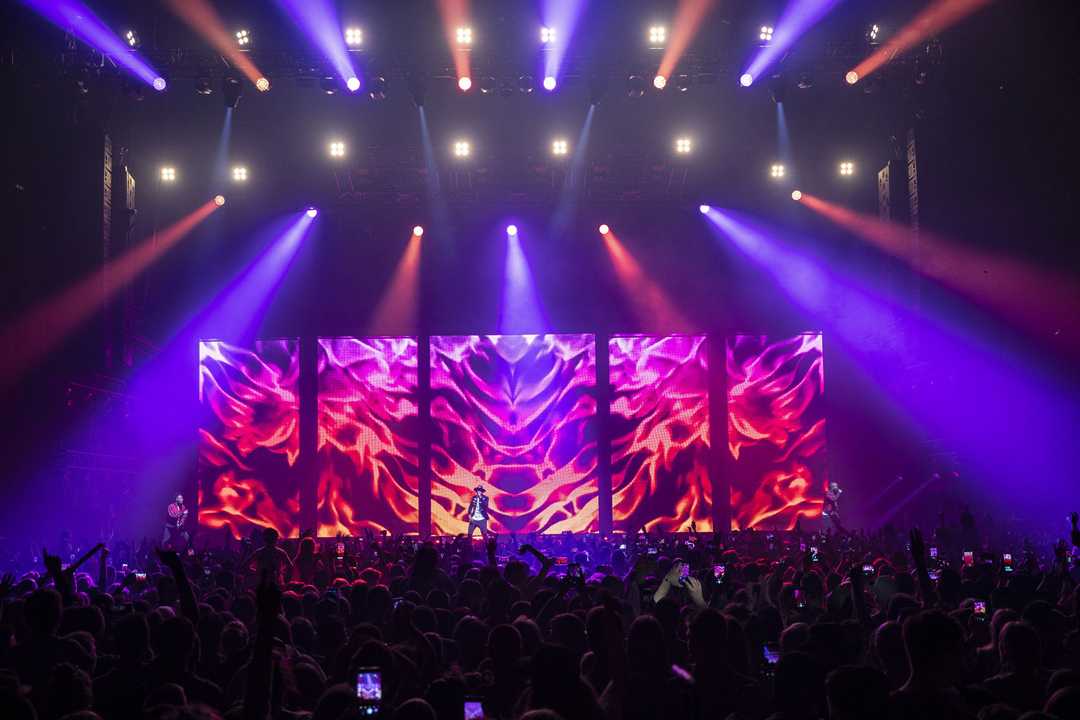Robes rise up for Soprano Phoenix tour
- Details

Young French lighting designer Victorien Cayzeele is an integral part of the creative team bringing the Phoenix touring show to life, a task he is doing spectacularly with the help of around 150 Robe moving lights which are at the core of an innovative and emotive visual experience.
Victorien has worked with the artist for six years, each tour seeing the shows getting bigger and bigger as Soprano’s influence and popularity grows. The 2019 touring schedule is action packed with a mix of own shows - including five stadiums in September - and festival headline slots as well as over 40 arena gigs.
Soprano’s reputation as a live performer and the special connection he has with audiences is also fuelling the demand for concerts.
When they decided on five large moving and tracking 10mm mesh LED screens with 80% transparency as the essential digital scenery and stage architecture, this presented some unique challenges for Victorien.
The all-axes tracking system - up / down, onstage / offstage and left and right - meant a roof filled with tracking trolleys and motors.
Before he’d even drawn a light on the plot, the team went through a series of essential screen moves and plotted each song in terms of the stage dynamics, which then dictated the exact positioning of the automation components.
“It was a very exciting and inspirational way to work” says Victorien, who enjoys being part of a creative team and the vibrant workflow that results from this scenario, with everyone bouncing ideas and synergies.
The total Robe counts are 55 x Spiider LED wash beams, 14 x BMFL Blades, 56 x LEDBeam 150s, 26 x MegaPointes and four BMFL Spots which are part of a RoboSpot system. Twenty four of the Spiiders are on the six side trusses, four per truss.
Some of the LEDBeam 150s are integrated into the video wall, along the top frames mounted on special brackets, together with some strobes and moving LED battens.
Each of the seven small trusses are loaded with a BMFL Blade, a Spiider, a MegaPointe and a strobe. The front truss is loaded with four of the BMFL Blades, four BMFL Spots and MotionCameras being controlled by three RoboSpot BaseStations, eight MegaPointes, eight Spiiders and six LED strobes.
Upstage on the floor is a line of 18 moving LED battens and six MegaPointes. There are more LEDBeam 150s in ‘planter’ cases along the front of the stage and more moving LED battens on the top step of the set.
Behind the video screens is a scaffolding structure which houses the DJ and the multi-instrumentalist who are backing Soprano on level two, with additional fixtures rigged on the structure to light them. (The central video wall of the five is ground supported - only the four side pieces and roof fly/track.)
The four BMFL follow spots are controlled via three RoboSpot BaseStations located side stage. Victorien loves these for the “discreet and dynamic” spotting opportunities. “
Victorien programmed the show assisted by lighting colleague Matthieu Patriarca, with a third operator, Romain Fior taking care of the video programming during the prep period and first month of the tour.
On the road he runs all the lighting himself utilising a grandMA3 with grandMA2 software which also triggers the playback video cues - via the SMODE server - through the console. Around 70% of the show is run from timecode from DJ Majide Mazari’s Ableton session which shares the signals for video, lighting and automation.
All the lighting and audio - a d&b audiotechnik GSL system - is supplied from Dushow, and the video is delivered by one of their partner companies, Alabama. The impressive video content was created by Paris based Cutback Live and automation comes from Canadian company Show Distribution via MASH, also part of the Dushow group.
(Jim Evans)


















